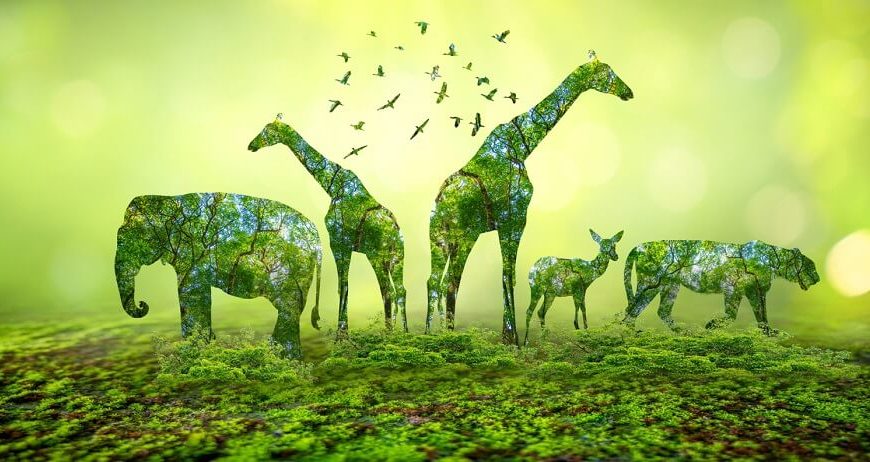If there is one word that separates our planet Earth from all the other planets in the known Universe, it is this: ‘Life!’
The world that we live is bristling with life. In fact, it is teeming with such an abundance of living organisms, it has given birth to a world within itself. ‘A Living World’, comprised of all living creatures and even microorganisms we cannot see,
In this article we will attempt to probe the answer to ‘What is the Living World?’, from a deeper perspective. We will come to see that there is really so much more to life, than we erstwhile believed.
Ready to take a look at what makes this magical “Living World’? Let’s go!
The Living World: A Closer Look
The Living World can be defined as a complex network of interconnected organisms that engage in Metabolism, Reproduction and Response to Environmental Cues. It is the sheer Diversity of living forms that gives this Living World a flourishing environment.
It is this very diversity that hints at the presence of myriad species with unique characteristics. In fact, one of the most striking characteristics of this Living World lies in the fact that an organism can be either a Living Thing, or a Non-Living Entity.
In order to distinguish between living and nonliving things, we must first understand what the term ‘living being’ even means.
The Characteristics of Living Organisms
So, what is a living organism? Simply put, anything that moves and breathes and makes changes around itself, is said to be a living being.
Here are some of the distinguishing features of living beings that help separate them from non-living creatures.
Growth
We know that all living things grow. However, even non-living things are capable of growing in size. Growth can be loosely defined as the increase in mass and number of any organism. It is exhibited by the division of cells in both multicellular and unicellular organisms.
Note: Even though growth is seen both in living and non-living beings, it is not considered as a defining feature, because living things do not grow forever.
Reproduction
The term Reproduction can be defined as the formation of new individuals of the same species. There are two kinds of Reproduction:
- Sexual Reproduction. In this type of Reproduction, two parents are required to produce organisms that are pretty much similar.
- Asexual Reproduction. In this type, a single parent is involved and the resulting individual is the clone of the parent.
Example: Birds and mammals, including human beings.
Example: Fungi, that undergo asexual reproduction to multiply and divide, through the production of asexual spores.
Metabolism
This is the sum total of all the chemical reactions that are occurring in living organisms. This involves the intricate process through which our bodies turn the food that we ingest, into energy that is needed to grow and reproduce. One striking feature of non-living things is, they do not reproduce. This is how metabolism becomes a key characteristic of living things.
Cellular Organization
Cellular Organization can be defined as the process of making up of the cells in an organism, and their arrangement inside it. It is important to note here, that the Cell is the most basic structural and functional unit of life. Found in all living organisms, it is one of the prime characteristics of living things.
Consciousness
This is pretty much the stuff that lends us the feeling of ‘Being Alive.’ While philosophers have long since struggled to explain Consciousness, it can be loosely defined as the awareness of our surroundings, and our response to External Stimuli. The external stimuli can be Physical, Biological or even Chemical. Undoubtedly, one of the most interesting characteristics of living things.
Cool Fact: A Human Being is the only organism who is aware of himself!
The Living World: The Essentials
One cannot answer the question ‘What is the Living World?’, without a key understanding of the components it is composed of.
So, what are the essentials that make this fascinating world, ‘Living’?
- Water. Did you know that we are more water than solid matter? Interestingly, our bodies are made of 70-90 percent water. It is this very Water, that plays an integral role in sustaining the different biological processes.
- Oxygen. Without oxygen in the air, none of us would be able to breathe. It is required during aerobic respiration, to produce energy that is vital for different metabolic activities.
- Proteins. We are all so focused on getting that daily intake of proteins, but do we know what proteins really are? They are long chains of amino acids that are connected by peptide bonds. Proteins play a significant role in the structure of organisms, and can be broken down with the release of energy.
- Sodium Chloride. This is commonly known by all of us as ‘Salt.’ However, in its ionic form it plays a vital role in the metabolic process of the human body.
Taxonomy: An Understanding
Since the living world is so diverse, it only becomes natural that there be a system in place to study it in depth. This is where Taxonomy steps in.
In layman terms, Taxonomy can be defined as a branch of Science that deals primarily with the Description, Identification and Classification of all living organisms. This is essential where it comes to classifying all living organisms into various groups and subgroups.
A more scientific definition of taxonomy is that it involves the classification of organisms both Alive and Extinct.
An example of Taxonomy is the following. While both Human Beings and Whales might be organisms that seem completely unrelated to each other, they are both Mammals. This in turn is what makes them Taxonomically Related.
At EuroKids, we believe that cultivating in children the understanding of Nature and Science, not only increases their knowledge, but strengthens their emotional and physical health, too. Their learning all about the Living World, instils in them a sense of respect for all living things, and a consciousness of the requirements of others.
















